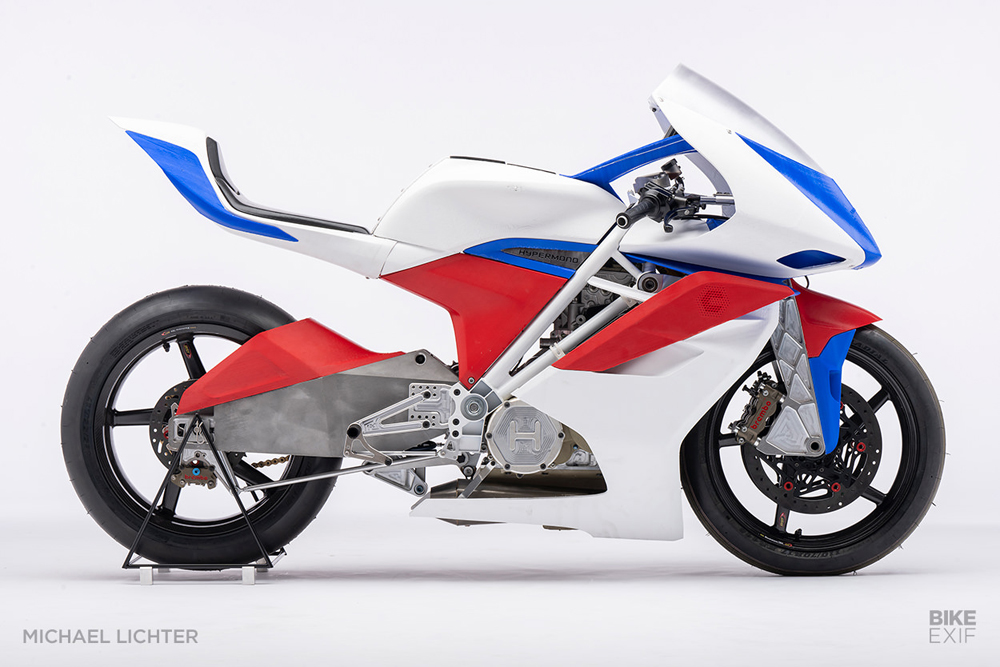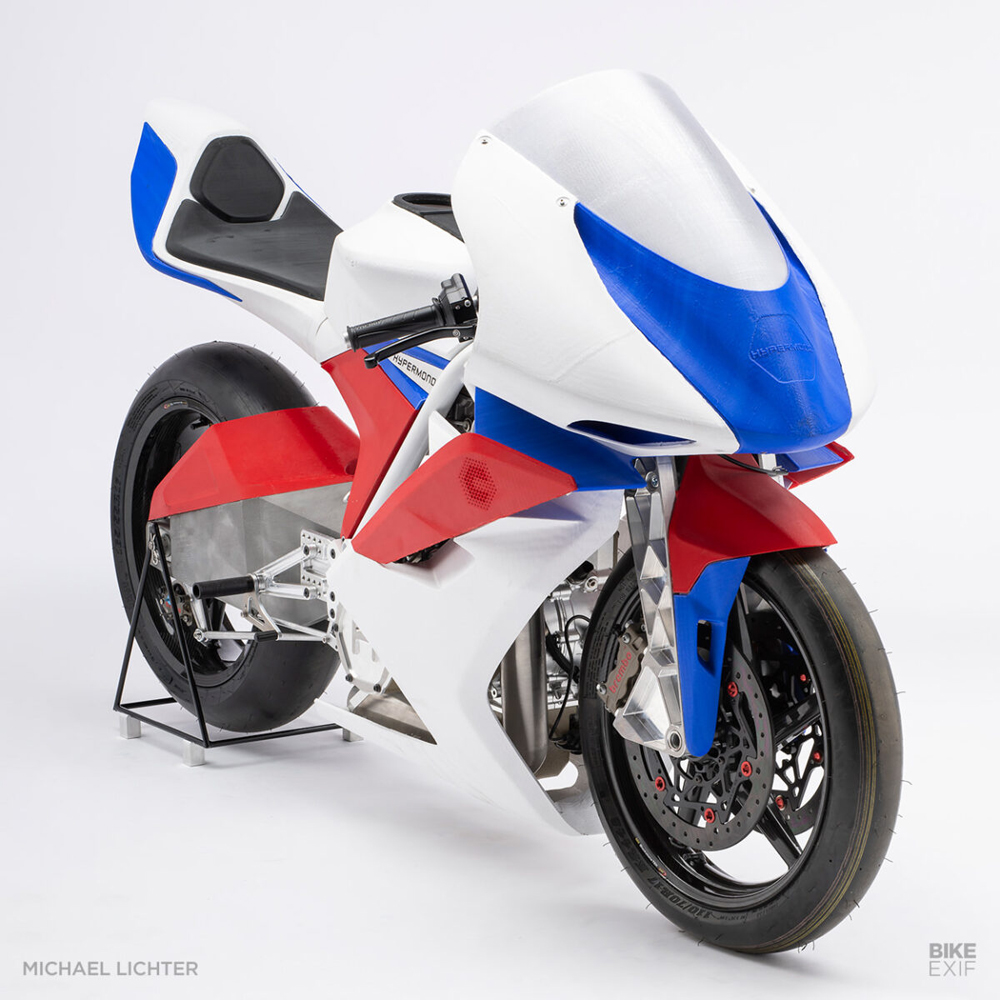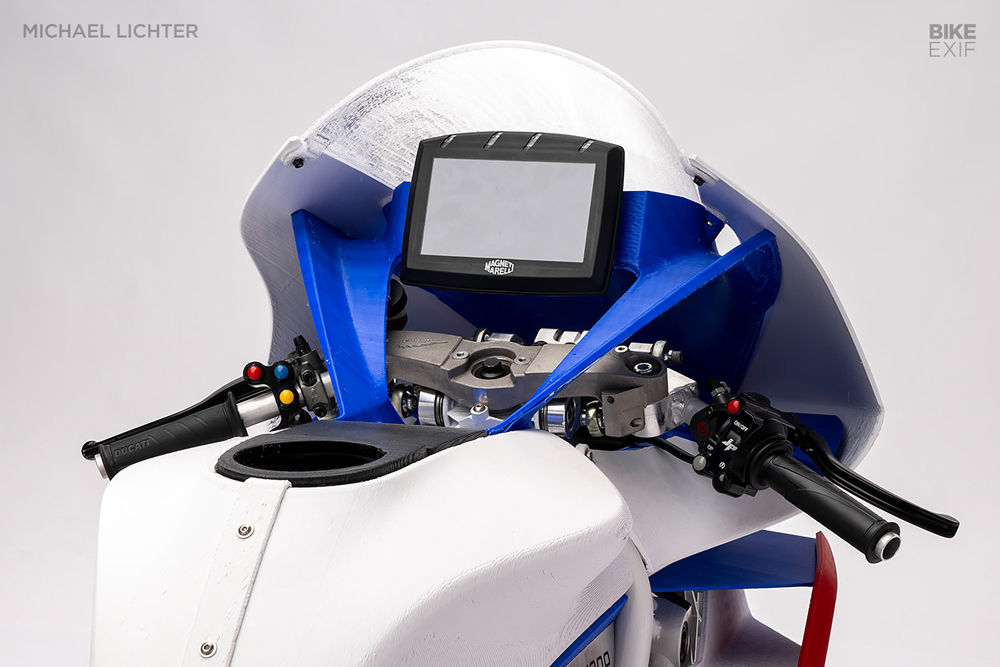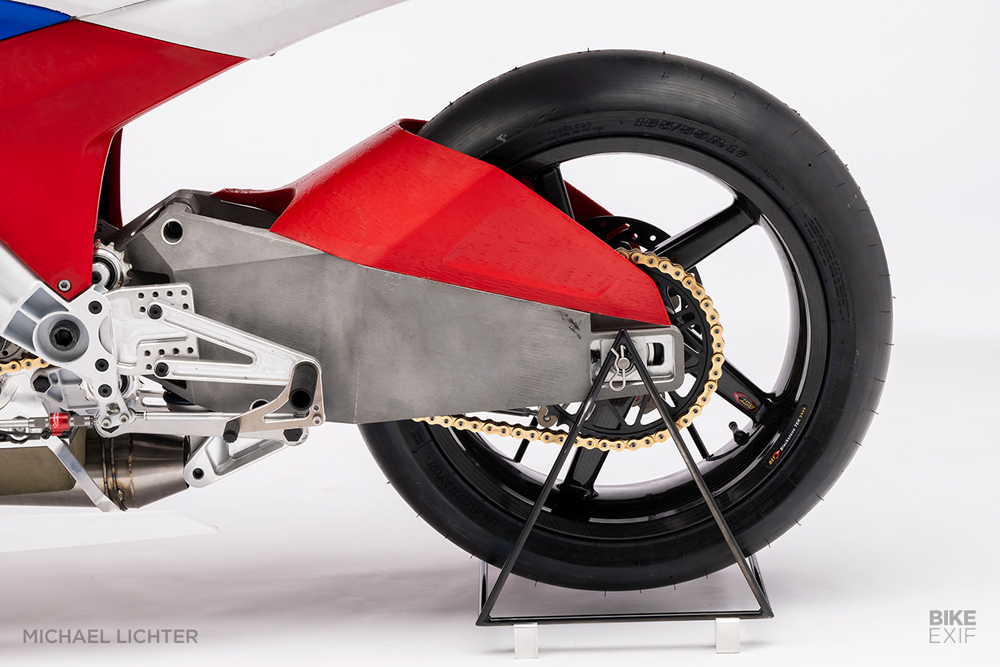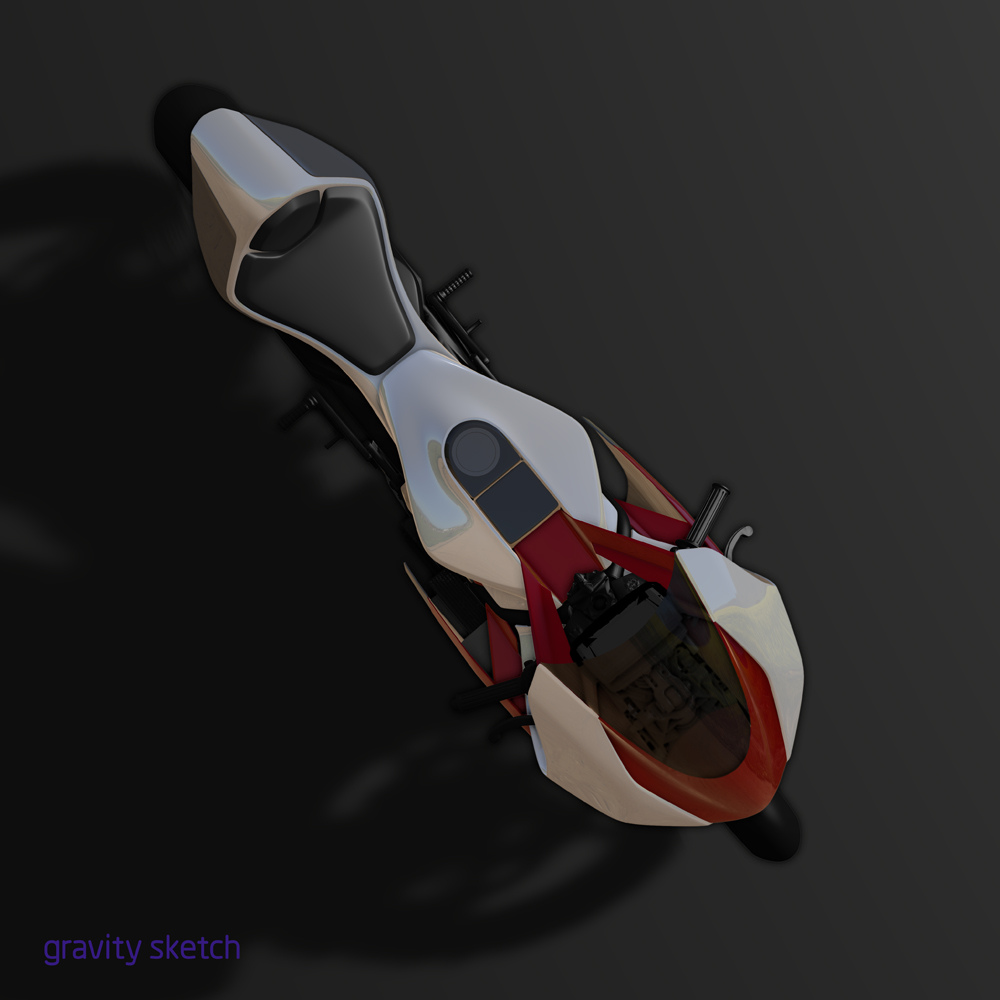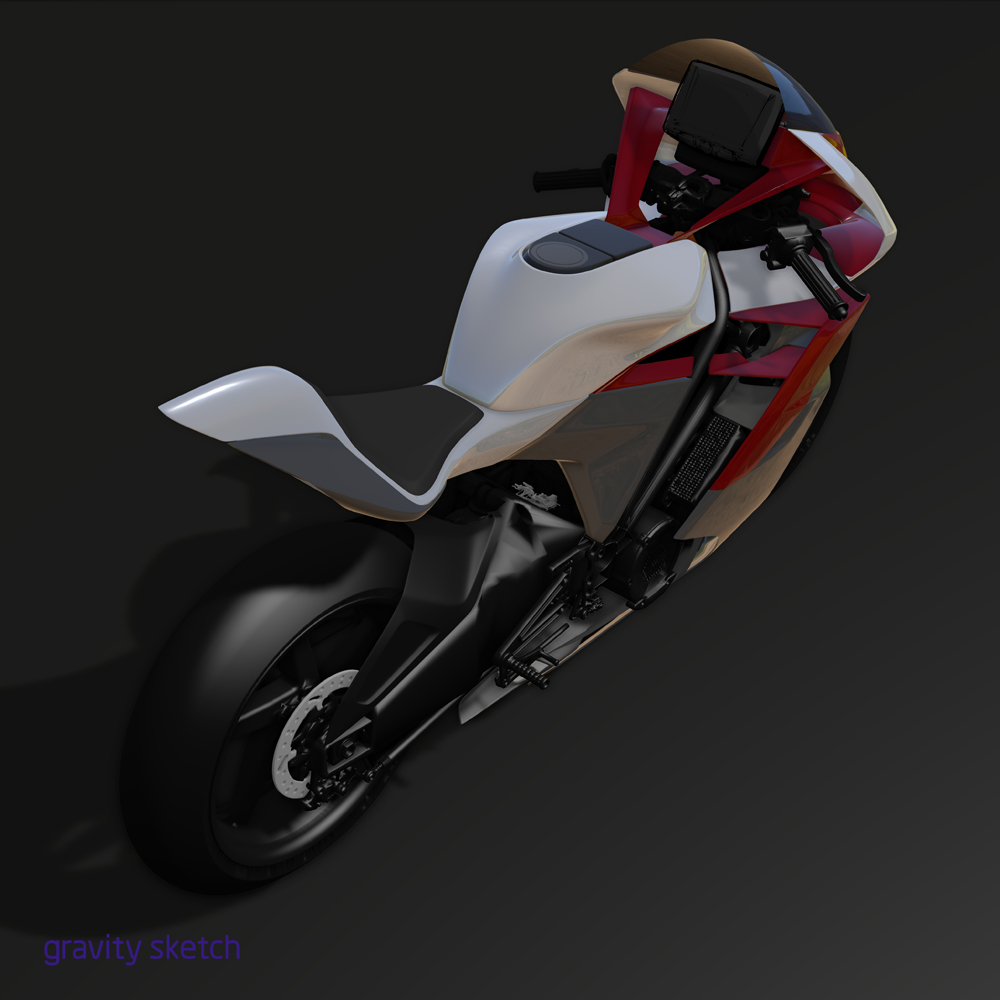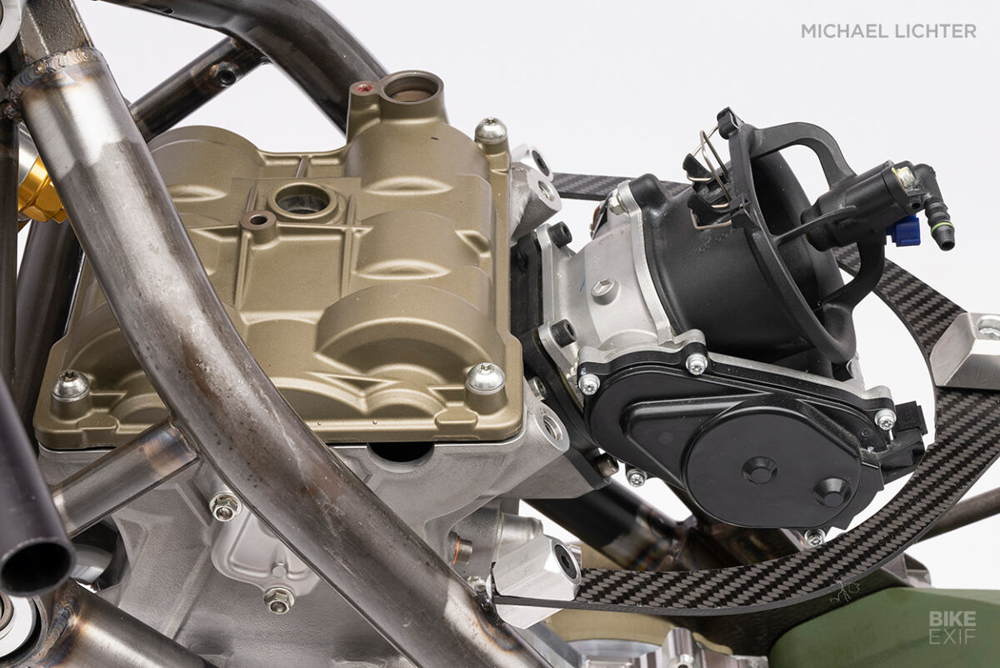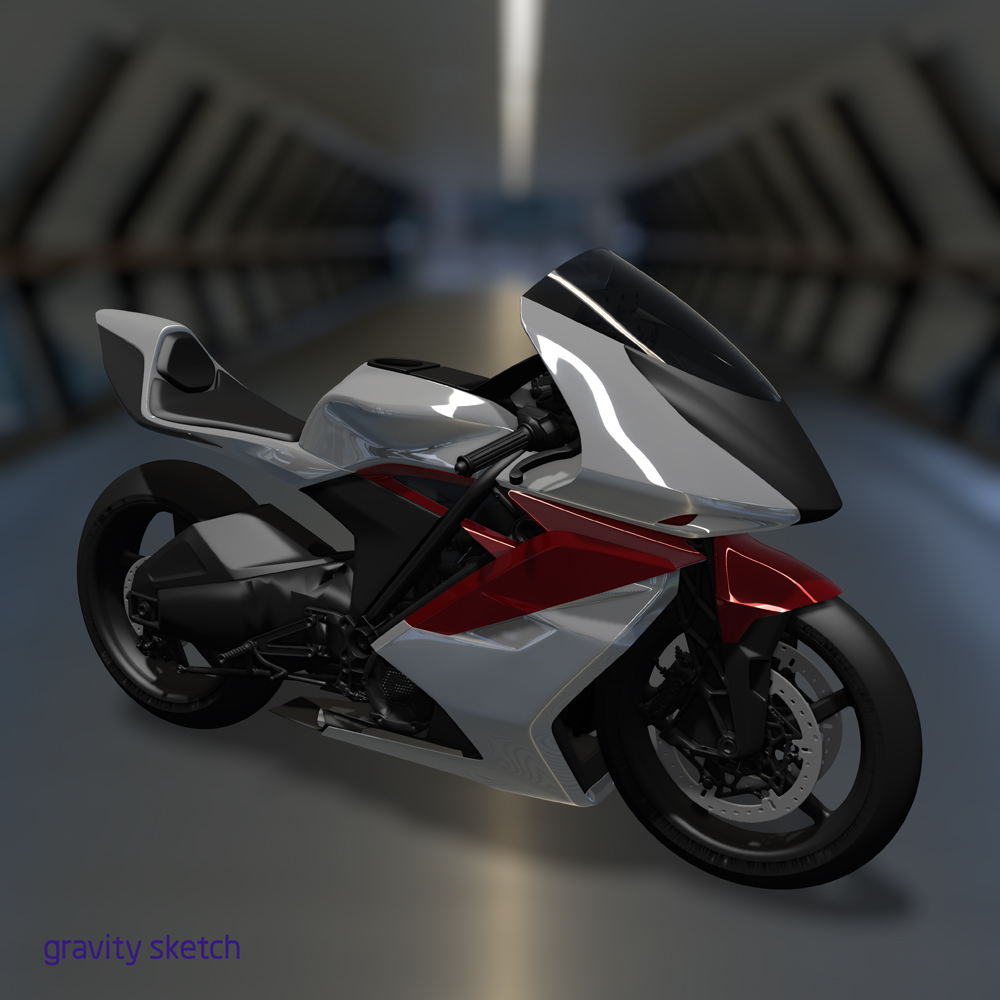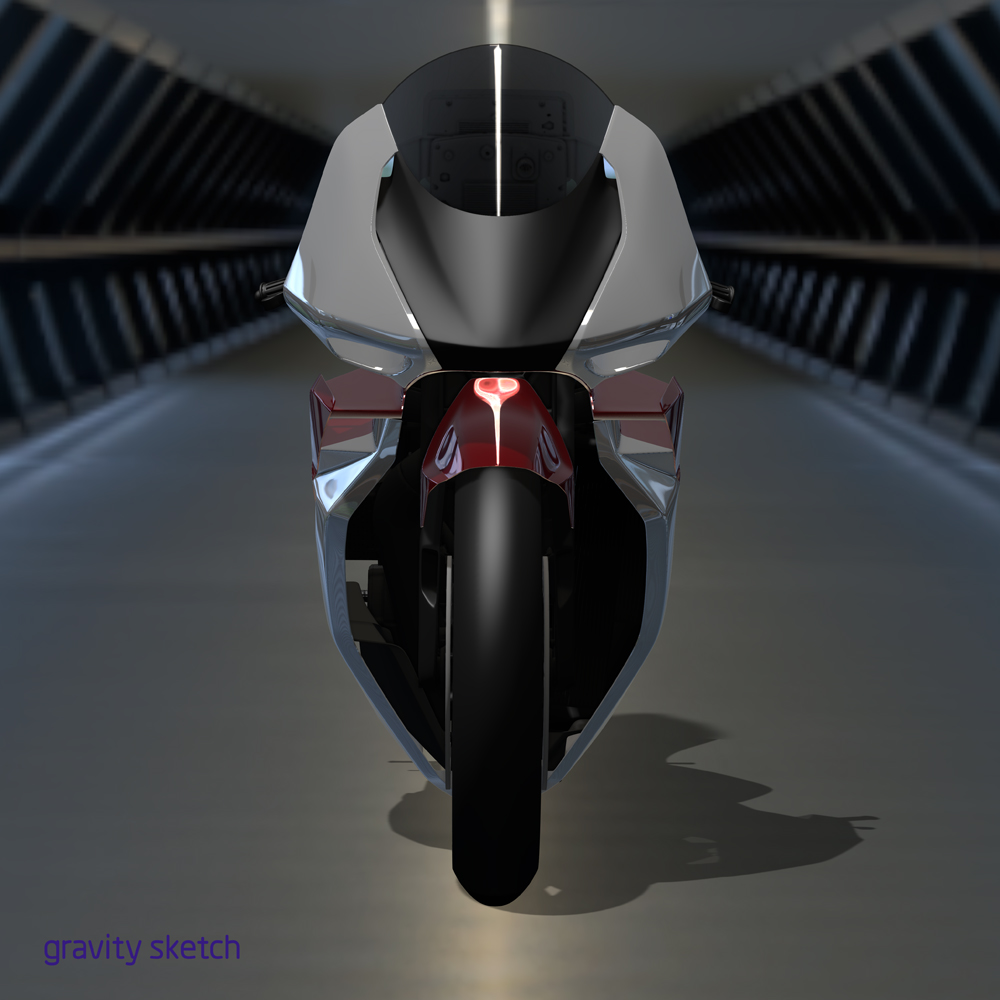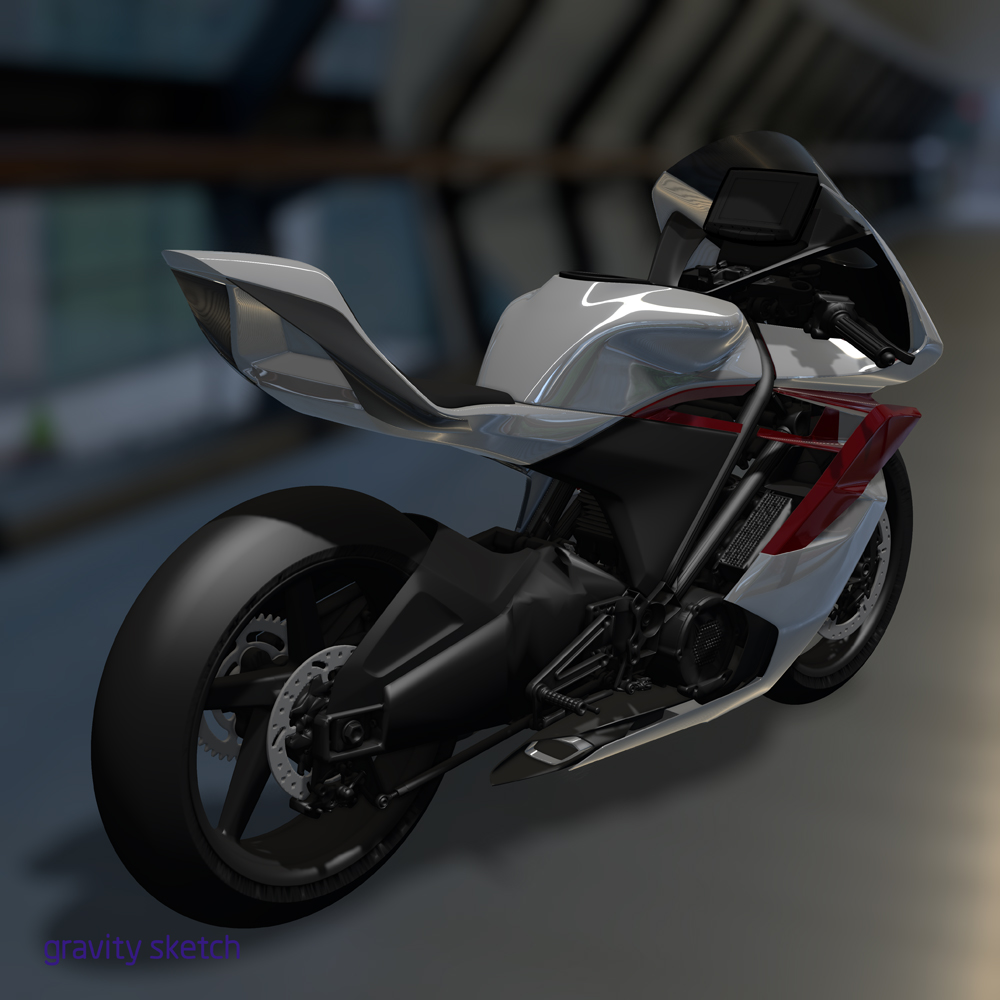- Client: Cosentino Engineering
- Our Role: Digital Modeller
The “Hypermono” race bike project is the brainchild of Chris Cosentino. Chris is a genius engineer who likes to build everything his way from scratch. I got word from a mutual friend that Chris was building his own single cylinder race bike, creating an engine from a donor V2 Ducati Panigale engine in a completely bespoke frame. It seemed to be a wonderful side project to get involved in, so I took up the challenge.
This is one of two race bike projects that I took on in order to give me a “real world project” to gain experience using the “Gravity Sketch” (GS) VR modelling software. The other being the “Lightfighter”.
This project is still on-going. The bodywork is only 3D printed (on a 3D printer that Chris build himself from scratch!) which still need to be reproduced in carbon fibre and the engine isn’t quite yet running (Oct. ’22). Photographed at this stage by the legendary Michael Lichter and covered by Bike EXIF among many other publications. Presented at “The One Show”, Sturgis, and Barber Motor Park.
Whilst I don’t normally “sell” my skills as a motorcycle designer – focussing more on realising the designs of others – it is nice to stretch my old design muscles once in a while, so I worked solo on this project, both as designer and modeller.
I go into some depth on the Lightfighter portfolio page as to the advantages of Gravity Sketch as a collaborative tool, however on this project I was flying solo most of the time. Still, it has huge advantages when you are both the designer and modeller, as I didn’t need to wait for permission or instruction to try out an idea. Seeing and working on the bike in true human perspective, at 1:1 scale gives you all the advantages of a clay model with none of the mess, waste or expense. Plus, it turns out that it’s far better to be able to see the bike in the right colours than all monochromatic brown… who knew!?
Furthermore, the ability to have direct reference to the engineering package, and clearance surfaces for moving parts like suspension and handlebars I could start to think of a number of construction innovations that could be applied to the bodywork.
Due to the funny front end for example, mounting points for the front fairing could not be in the usual spot between the forks. This was solved by bridging a single component over (and under) the top yoke that provides a sturdy backbone not just for the front fairing panels and windscreen, but also the speedometer, the aerodynamic downforce generating wing, one side of the ducting for ram air induction, and ducting for bleeding air into the low pressure cockpit area.
The benefits of doing this project in VR are have been so significant, that I can scarcely convey them all here effectively, but let’s try…
- It was digital modelling, but with all the true human perspective advantages of a real clay model. With a “zero budget” project such as this, that will not go through a clay loop, being able to model the bike in this perspective gave me real confidence to send the finished surfaces to be directly 3D printed. That would never be possible from a flat monitor digital model – the output of these systems being largely junk.
- A motorcycle is a balance of different colours and graphic proportions. Being able to see these readily while working on it, and not just in completely monochromatic brown is a HUGE advantage. Anyone who has seen the way a clay model comes alive once it’s painted can understand why this is.
- I could import the complete engineering package and a rider mannequin, and make fully informed decisions based on the realities of the package and rider ergonomics.
- I could try many crazy design ideas without penalty, and compare them next to each other.
- I could literally get “inside the bike”, and really think about construction of the panels. A motorcycle is a piece of elegant engineering after all, and engineering goes more than skin deep.
- With GS I can generate design defining curves that float in mid-air, and refine these lines in all dimensions (by looking down it with one eye like with a clay tape). The new VR workflow first defines these curves “in the air” and you work back from these to create surfaces. Compared to clay and nurbs modelling, it removes the labour intensive need to make one good surface and then lay a tape/project a line on it before making the adjacent surface following this… then realising your first surface wasn’t quite right… so rinse and repeat. Compared to all current “flat monitor” digital modelling, being able to see in 3D and understand these curves, and their relationship to other curves, as you would on a physical model is frankly incomparable.
- Since “the studio” was at home, I could jump in for a few hours whenever I wanted.
I’m sure I’ll update this page once the bike gets to the next stage of it’s development.
All in all, this and the Lightfighter project have provided a pivotal moment in my professional career. Never again can I do a project without using the power or VR. Noone should.

